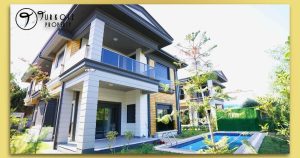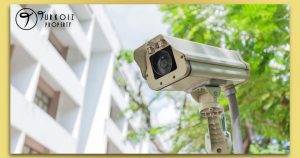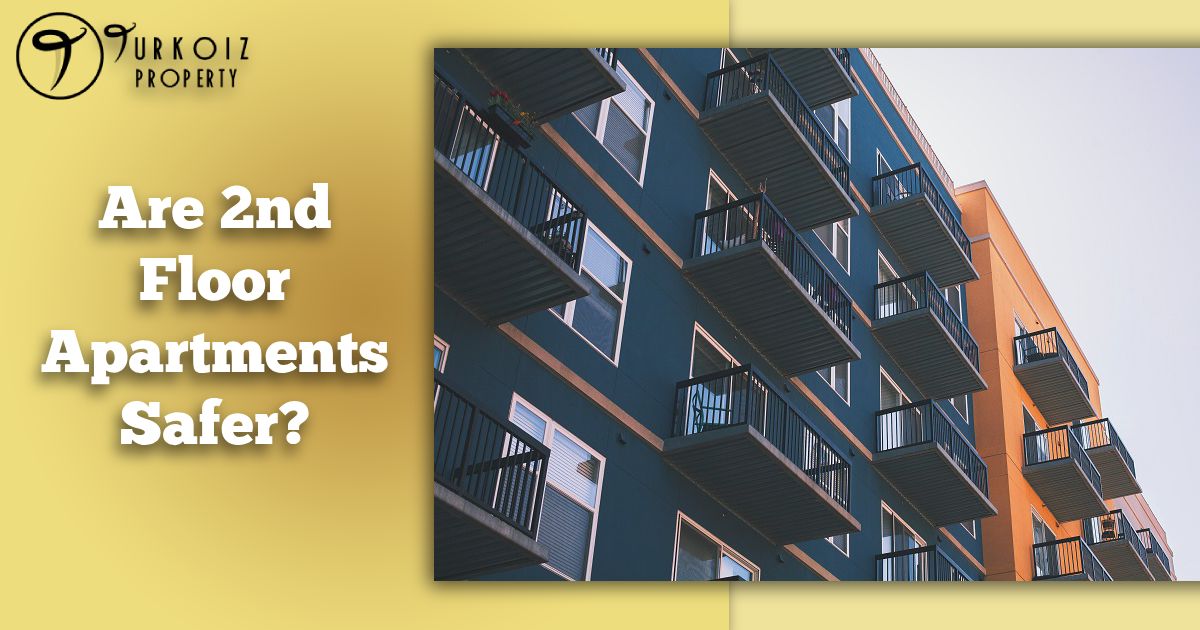When it comes to apartment living, many people often wonder, are 2nd floor apartments safer?
There’s a common perception that residing a bit higher off the ground provides an extra layer of security and safety.
This article aims to explore the validity of this perception, examining various factors that contribute to the safety and security of second-floor apartment living.
Advantages of 2nd Floor Apartments
Living a floor up comes with several perks. Advantages of living on the second floor include a reduced risk of break-ins, as criminals often target ground-level apartments for easy access.
Enjoying better views and experiencing less noise from street level are added bonuses.
Unique security features for upstairs units might include better lock systems and private balconies that are less accessible to intruders, enhancing the benefits of second-story apartment living.
Disadvantages of 2nd Floor Apartments
However, there are some downsides to consider. Issues like accessibility, especially for those with mobility challenges, and the inconvenience of climbing stairs can’t be overlooked.
In emergencies, being on the 2nd floor can pose risks. Weighing these disadvantages against the crime rates in upper-level apartments, which tend to be lower, is crucial when considering safe living options in multi-story residences.
Are 2nd Floor Apartments Safer?
Yes, second-floor apartments can be considered safer in certain aspects. Living on an upper floor may offer increased security by reducing the risk of break-ins compared to ground-level residences. Elevated living spaces often provide a sense of added privacy and deter potential intruders. Moreover, being situated above ground level can mitigate concerns related to flooding or water damage. However, it’s crucial to recognize that safety is a multifaceted consideration.
While second-floor living may offer advantages in certain scenarios, factors such as accessibility during emergencies, building design, and adherence to safety regulations also play pivotal roles in overall safety assessments. Therefore, when evaluating the safety of a second-floor apartment, a comprehensive examination of these various factors is essential.
A much detailed explanation is given below.
Fire Safety Considerations
Living in a multi-story building brings about unique fire safety considerations, especially for those residing on the 2nd floor. It’s essential to have a robust understanding and preparation for potential fire emergencies to ensure the safety and well-being of all occupants.
1. Importance of Fire Escape Plans
Having a solid fire escape plan is crucial. It provides a clear evacuation path, minimizing confusion and panic during a fire outbreak. Residents should familiarize themselves with all exit routes, including stairwells and fire escapes. Regular fire drills can help in ensuring everyone knows the escape plan and can react promptly during emergencies.
2. Equipment Accessibility
Access to fire safety equipment like smoke alarms, fire extinguishers, and fire blankets is crucial for fire safety in multi-story buildings. Ensuring that these devices are in working condition and easily accessible can make a significant difference in reacting to fire emergencies.
Moreover, it’s advisable to have a fire extinguisher on each floor and near the kitchen area, where fires are most likely to start.
3. Statistics on Fire Incidents
Various studies highlight the differing risks associated with fire incidents on different floors. Generally, the higher the floor, the more challenging the evacuation. However, 2nd floor apartments often have more time to react to a fire alarm compared to ground-floor units, which may face immediate threats.
4. Fire Department Accessibility
The accessibility of the fire department to the 2nd floor is also a factor that can influence fire safety. In buildings equipped with exterior fire escapes or those located near fire stations, the response time might be quicker, aiding in the timely evacuation and firefighting efforts.
5. Window Safety Measures
Window safety measures like having windows that can be easily opened, or even broken in case of emergency, are essential. It’s also advisable to have window ladders that can be deployed quickly for a safe descent to the ground, offering an alternative escape route.
6. Balcony Safety
For apartments with balconies, ensuring that they are easily accessible and free from clutter is vital. In the event of a fire, balconies can serve as waiting areas for rescue or even as escape routes if equipped with descent devices like ropes or ladders.
The risks of ground-floor vs. second-floor apartments vary, and while there may be challenges associated with escaping from a higher floor during a fire, having robust safety measures in place can significantly mitigate these risks.
Therefore, fire safety should be a high priority consideration for anyone living in multi-story residences, regardless of the floor they reside on.
Security Measures for 2nd Floor Apartments
The allure of 2nd floor apartments often lies in the added layer of security they provide against potential intruders. However, this should not breed complacency among tenants.

There are several security measures that can be employed to bolster the safety of 2nd floor apartments, making them less appealing targets for burglars and other malevolent actors.
1. Window Locks
Windows are potential access points for intruders, hence ensuring they are securely locked is crucial. Installing robust window locks is a simple yet effective way to enhance security.
Additionally, tenants may consider installing window alarms that alert them whenever a window is opened or broken. It’s wise to regularly check these locks and alarms to ensure they are functioning properly.
2. Balcony Safety
Balconies can be a vulnerability if not properly secured. It’s advisable to keep balconies locked when not in use. Installing a sturdy lock on balcony doors, and keeping the area well-lit to deter any would-be intruders is smart.
Furthermore, avoid storing ladders or other objects that could aid an intruder in gaining access to your balcony.
3. Door Security
The main door is the primary defense against break-ins. Opting for solid core or metal doors equipped with deadbolt locks significantly boosts security.
Additionally, installing a peephole to see who is at the door without opening it, or adding a security bar for extra reinforcement are prudent measures. It’s also beneficial to change locks when moving into an apartment previously occupied by someone else.
4. Additional Security Measures
Investing in a home security system is a comprehensive approach to safeguarding your apartment. Systems with cameras, motion detectors, and 24/7 monitoring provide a robust security infrastructure.
Moreover, simple practices like not advertising your absence on social media, and getting to know your neighbors, who can be extra eyes on your apartment, also contribute to a safer living environment.
Environmental Factors
The elevation of an apartment, particularly those on the 2nd floor, can significantly influence the safety and comfort of the dwellers, especially during certain environmental occurrences.
Delving into these factors sheds light on how living a level up can be a safer option under specific circumstances.
1. Weather-Related Risks
One of the notable benefits of residing on the 2nd floor comes to light during adverse weather conditions. For instance, ground floor apartments are more susceptible to flooding during heavy rainfall or storms.
The water accumulation in streets and surrounding areas can easily seep into ground-level units, causing damage to property and potentially creating hazardous living conditions.
On the other hand, 2nd floor apartments are elevated above the immediate reach of floodwaters, providing a level of protection against such weather-related risks. This elevation also reduces the likelihood of water seepage from surrounding grounds, which is often a concern during heavy downpours.
2. Safety During Natural Disasters
The elevation of 2nd floor apartments can also play a significant role during other natural disasters. For example, in areas prone to wildfires, being on an upper level can provide an added vantage point to observe and respond to nearby threats.
Moreover, the elevation can sometimes result in slightly better air quality during such incidents, as smoke and other pollutants may be more concentrated closer to ground level.
3. Elevation Influencing Safety
Elevation can indeed influence safety during natural disasters. While being on higher ground can be advantageous during flooding, it may present challenges during other occurrences like earthquakes. However, modern buildings are designed with structural integrity to withstand such forces to a certain extent, regardless of the floor level.
Moreover, the reduced risk of pest infestations, which are more common on the ground floor, contributes to a safer and healthier living environment. Pests often carry diseases and can be a nuisance; hence being on the 2nd floor can provide a reprieve from such concerns.
Home Security Tips for Apartment Dwellers
Irrespective of the floor you reside on, enhancing the security of your apartment is a prudent endeavor that contributes significantly to a peaceful living experience. Here are some additional tips that can be employed to fortify the security of your apartment, ensuring a safe haven for you and your loved ones.
1. Installing Security Cameras

Security cameras act as a deterrent to potential intruders while providing real-time surveillance of your apartment. Modern security cameras come with features like motion detection, night vision, and remote monitoring through smartphone apps.
Placing cameras at strategic points such as the entrance, living room, and balcony can provide comprehensive coverage, enhancing the security features for upstairs units and ground-level apartments alike.
2. Utilizing Smart Locks
The advent of smart locks has revolutionized home security by offering features like keyless entry, remote locking and unlocking, and access logs. These locks provide a higher level of security compared to traditional locks, making unauthorized access exceedingly difficult.
By installing smart locks on doors and other entry points, you’re adding a robust layer of security that can be monitored and controlled remotely.
3. Joining Neighborhood Watch Programs
Being part of a neighborhood watch program fosters a community of vigilance, significantly deterring criminal activities. These programs promote the reporting of suspicious activities and foster a community-centric approach towards maintaining a safe and secure neighborhood.
By joining or initiating a neighborhood watch program, you’re not only enhancing the security of your apartment but contributing to the overall safety of your community.
4. Additional Measures
Other measures like ensuring adequate lighting in and around your apartment, keeping your curtains closed when not at home, and scheduling regular security system maintenance are simple yet effective strategies to boost apartment safety.
Benefits of second-story apartment living often include a perceived higher level of security. However, employing a combination of the aforementioned security measures can significantly enhance the safety of any apartment, ensuring a serene and secure living environment regardless of its location in the building.
Through proactive engagement in security enhancement practices, apartment dwellers can significantly mitigate risks, fostering a peaceful living atmosphere.
Conclusion
The question, “Are 2nd floor apartments safer?” unveils a layered analysis. While the elevation offers some safety advantages against issues like burglary and flooding, it also demands proactive measures in fire safety and security implementations.
Thus, while 2nd floor apartments have their merits in safety, the extent of security also significantly hinges on the efforts of the dwellers in fortifying their living spaces against various risks.
